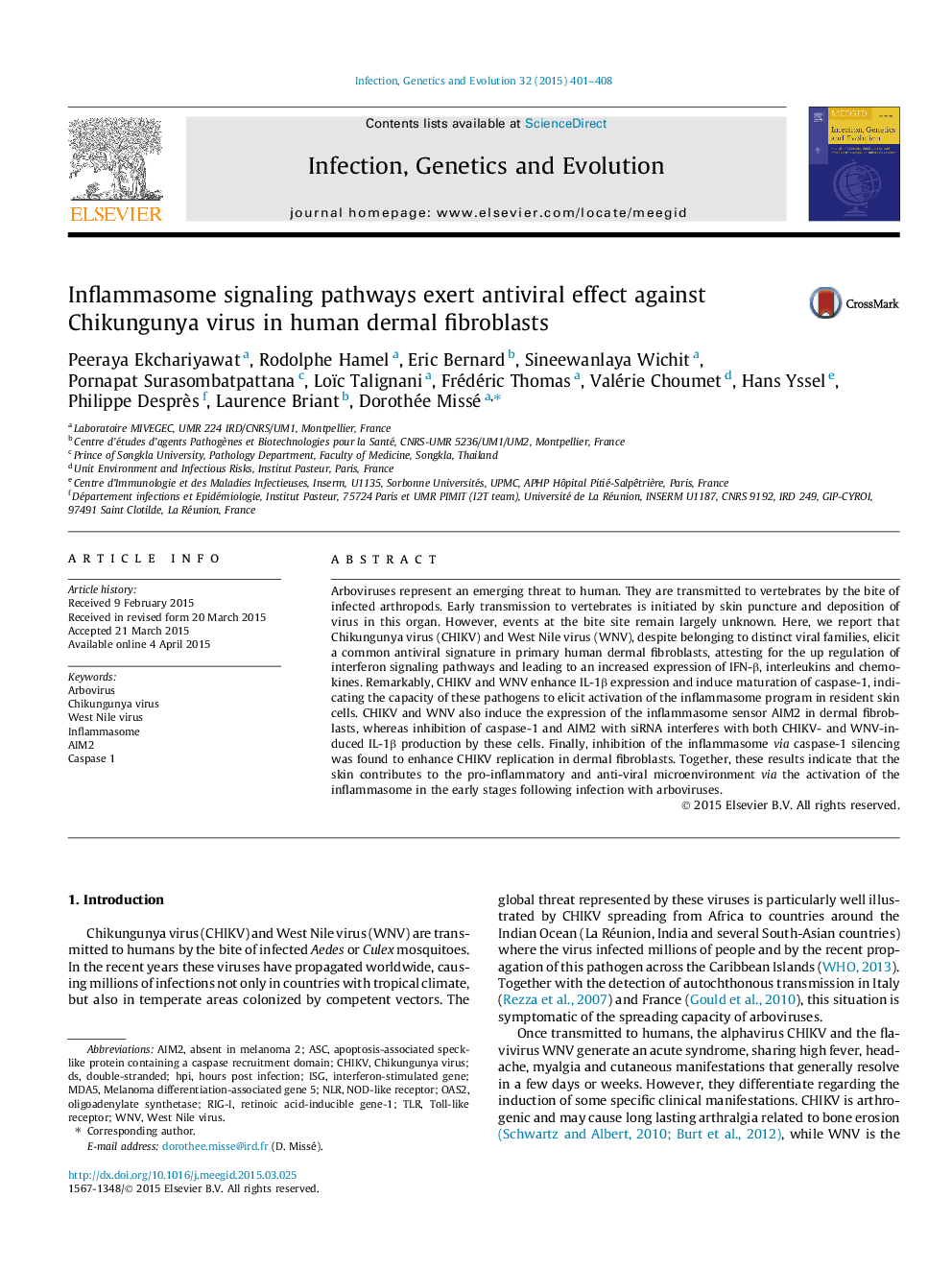| کد مقاله | کد نشریه | سال انتشار | مقاله انگلیسی | نسخه تمام متن |
|---|---|---|---|---|
| 5909231 | 1570171 | 2015 | 8 صفحه PDF | دانلود رایگان |

- We have investigated the anti-viral response of CHIKV and WNV in dermal fibroblasts.
- CHIKV and WNV elicit a common antiviral signature in dermal fibroblasts.
- CHIKV and WNV enhance IL-1β expression and induce maturation of caspase-1.
- CHIKV and WNV induce the expression of the inflammasome sensor AIM2.
- Inhibition of the inflammasome via caspase-1 silencing enhances CHIKV replication.
Arboviruses represent an emerging threat to human. They are transmitted to vertebrates by the bite of infected arthropods. Early transmission to vertebrates is initiated by skin puncture and deposition of virus in this organ. However, events at the bite site remain largely unknown. Here, we report that Chikungunya virus (CHIKV) and West Nile virus (WNV), despite belonging to distinct viral families, elicit a common antiviral signature in primary human dermal fibroblasts, attesting for the up regulation of interferon signaling pathways and leading to an increased expression of IFN-β, interleukins and chemokines. Remarkably, CHIKV and WNV enhance IL-1β expression and induce maturation of caspase-1, indicating the capacity of these pathogens to elicit activation of the inflammasome program in resident skin cells. CHIKV and WNV also induce the expression of the inflammasome sensor AIM2 in dermal fibroblasts, whereas inhibition of caspase-1 and AIM2 with siRNA interferes with both CHIKV- and WNV-induced IL-1β production by these cells. Finally, inhibition of the inflammasome via caspase-1 silencing was found to enhance CHIKV replication in dermal fibroblasts. Together, these results indicate that the skin contributes to the pro-inflammatory and anti-viral microenvironment via the activation of the inflammasome in the early stages following infection with arboviruses.
88
Journal: Infection, Genetics and Evolution - Volume 32, June 2015, Pages 401-408